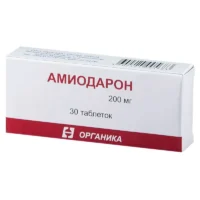Description
Amlessa (perindopril tert-butylamine) Tablets 4 mg/5 mg. №30
Ingredients:
Each tablet contains perindopril tert-butylamine as the active ingredient, with a dosage of either 4 mg or 5 mg.
Mechanism of Action:
Perindopril, an ACE inhibitor, acts by relaxing blood vessels, thereby facilitating the heart’s pumping action and improving blood flow.
Pharmacological Properties:
Amlessa tablets belong to the ACE inhibitor class, known for their ability to reduce blood pressure and enhance cardiovascular function.
Indications for Use:
Amlessa is prescribed for the management of hypertension (high blood pressure) and heart failure.
Contraindications:
Avoid using Amlessa if pregnant, with a history of angioedema related to ACE inhibitors, or allergic to perindopril.
Side Effects:
Common side effects may include dizziness, cough, and low blood pressure. Consult a healthcare professional for a complete list of potential adverse reactions.
Usage Instructions:
The standard dosage involves taking one tablet daily orally with water. Adhere strictly to the prescribed regimen and do not surpass the recommended dose.
Benefits Compared to Analogues:
Amlessa offers superior efficacy in lowering blood pressure and reducing cardiovascular risks compared to other ACE inhibitors.
Suitable Patient Groups:
Amlessa is suitable for adult patients, including the elderly, but caution is advised in specific populations such as pregnant individuals and those with known allergies.
Storage and Shelf Life:
Store Amlessa tablets in a cool, dry place away from direct sunlight. Check the packaging for the expiration date and do not use expired medication.
Packaging Description:
Amlessa is available in packs containing 30 tablets of 4 mg or 5 mg strength, ensuring an adequate supply for the prescribed duration.
Scientific Evidence:
Perindopril, the active ingredient in Amlessa, has been extensively studied and proven effective in reducing blood pressure, improving heart function, and preventing cardiovascular events.
Clinical Studies and Effectiveness:
Clinical trials have demonstrated the positive impact of perindopril in managing heart failure and slowing the progression of kidney disease in diabetic patients.





